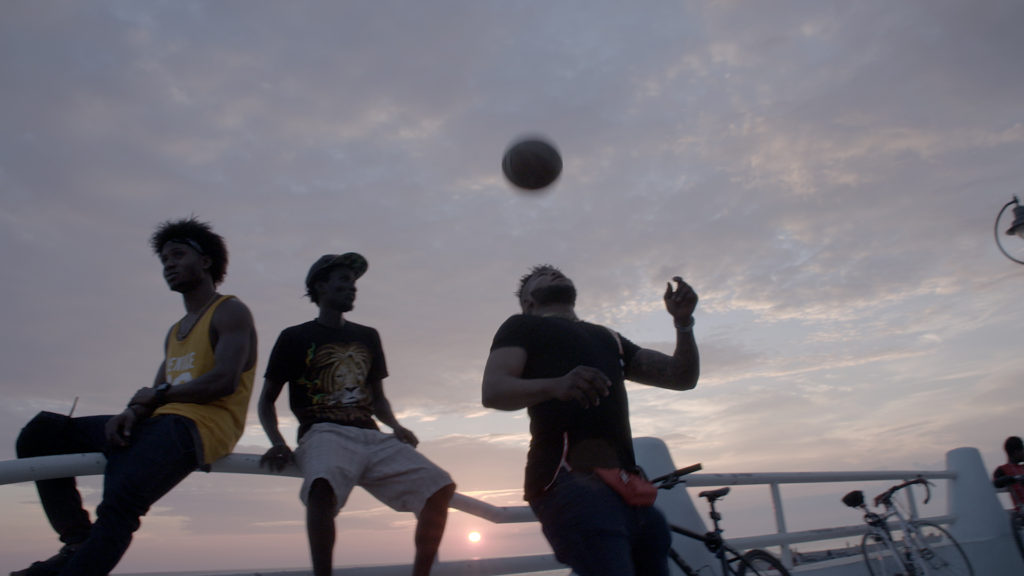Documentary on Migration vs. Immigration in Italy
La Guarimba International Short Film Festival in Amantea
The film SHOULD I STAY OR SHOULD I GO is a short documentary on migration versus immigration in Italy. We shot in and around Amantea, Calabria, Italy. Giulio Vita and Sara Fratini commissioned the film. Both are the founders and directors of the La Guarimba International Short Film Festival in Amantea. The festival is driven by the mission statement of bringing cinema back to the people and the people back to the cinema. Therefore it was our intention from the start to build our film in and around the community of Amantea and Calabria as a region itself.
A Collaboration
SHOULD I STAY OR SHOULD I GO is the first collaboration by Korean based German filmmaker Nils Clauss and Swiss filmmaker Thomas Horat. Nils and Thomas met when they participated in the La Guarimba International Short Film Festival in Italy in 2017. After the festival Giulio Vita, the director of the festival, invited them to return in 2018 to create a film in and around Amantea in Calabria, Italy. This is what originated this film.
Modern Migration in Italy
Migration has been part of everyday life for the poor in Calabria and the Italian South since the 19th century. Unlike in the pre-war periods, the bulk of migration from the second half of the 20th century was mainly from small towns and villages in rural areas of southern Italian regions. This includes Sicily, Calabria, Abruzzo and Campania. People from those areas migrated primarily in search of a better living conditions and a higher income.
Migration and the Element of Return
SHOULD I STAY OR SHOULD I GO started as a project meant to look at the phenomenon of Italian migration with a specific focus on the element of return. By focusing on a range of individuals around the city of Amantea, we wanted to see what kind of impact migration had on the region. Which conflicts arose upon the migrants temporary or permanent return?
Migration versus Immigration
Nevertheless, this turned out to be only one part of the story of the final film. When we met Stanley Eboigbe from Nigeria during the casting process, we were inspired to follow up on the story of Italian migration. We wanted to see why that own experience of so many Italians, has not been helpful to make things easier for recent refugees who come and try to make a living in Italy. Daniele Chiodo, one of the three main characters, says in the film: “We were migrants too. We were possibly worse than them. We have to earn millions just to be happy. It’s like a circle. They come here, and we go away. And then we can’t find a job here. It’s a huge mess. Come on, what does it mean that now we don’t want to host them?”
Nothing in Common?
At first sight Daniele, Saveria and Stanley have nothing in common due to their different backgrounds. Although by sharing their hopes and dreams about leaving or staying in Italy, their stories surprisingly overlap. For example Saveria, who has lived as an emigrant in Venezuela for a big portion of her life, in a way shares the same feelings as Stanley about living in Italy after her return. For her like Stanley it is difficult to relate to the local people who have never left Italy, or even the region of Calabria.
“Us” versus “Them” and the Overlap
This kind of feeling of alienation or clash of two different value systems is what this film focuses on. By showing the gap between the life experiences between the “here” (in Italy) and “there” (outside of Italy) and the distinction often made between “us” and “them”, the film intends to show how emigrants, immigrants and migrants share a lot of the same issue. Although what creates the difference is the social, economical and political perception within each individuals surrounding habitat.
Jeff Wall & Stephen Waddell
In contrast to those three different stories the directors tell, other Italian emigrants and African refugees are also present in the film. Based on a more photographic portrait style approach, which pays tribute to the work of contemporary photographers Jeff Wall and Stephen Waddell, we stage a range of scenarios within the film, where people hide their identities by either facing away from camera or by covering their faces.
Inspiration of Visual Style
An Italian news reel at the beginning of the film explains how Italian emigrants were not welcome to Switzerland when the country closed its borders to Italy in 1965. While we hear very hostile comments by some Swiss people being interviewed on the street, the news footage overlaps with those identity hidden portrait shots. This create a feeling of shame. Then those Italians, who have been ashamed living as emigrants overseas obviously build an arch to the refugees, who currently seek asylum in Europe and have to face a lot of xenophobia. This is why in shame they turn away from the camera lens in those stylized portrait shots. Aesthetically, this approach also allows us to break with more traditional concepts of documentary based storytelling and hopefully contributed to shape a less linear film.
Thank you very much, Nils & Thomas







